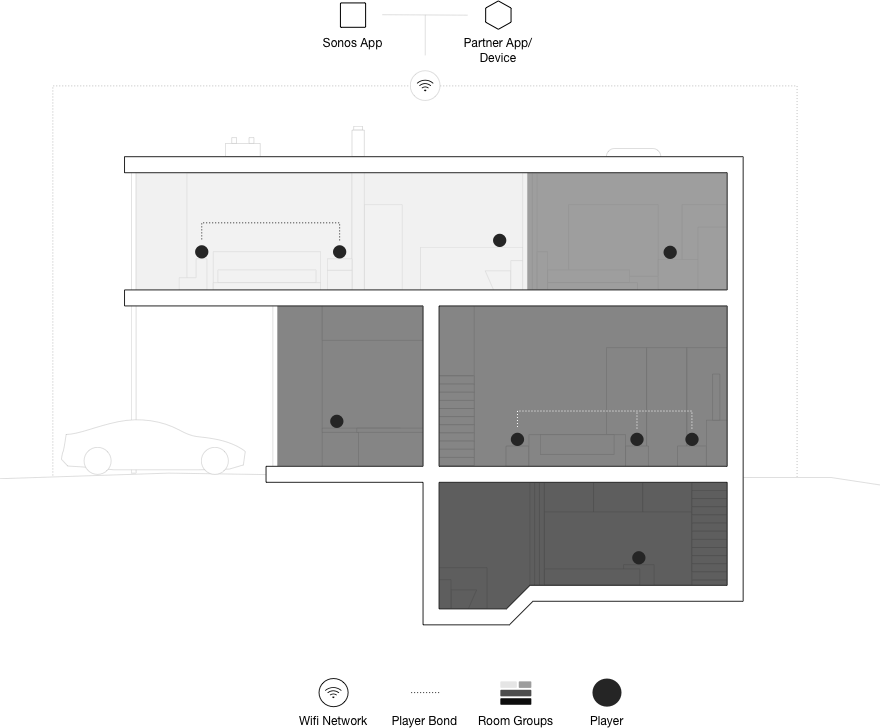How Sonos Works
Sonos players are smart speakers. They play multiple sound streams in multiple rooms, from multiple accounts, controlled by multiple users using multiple interfaces. You can control Sonos players using the Sonos app, hardware buttons, third-party apps or hardware, and voice. Because of the variety of controls, Sonos encourages continuity of control. No matter where you started the music, you can pause it, skip it, or change its volume without having to use the same device.

What is a player?
A Sonos player can play music on its own, either with its own internal speaker drivers or when connected to external speakers. For example, a Sonos One can play music with its own speakers and a Sonos Amp can play music with connected speakers. The SYMFONISK table lamp with WiFi and SYMFONISK WiFi bookshelf speakers also function as Sonos players. By itself, a Sonos Sub is not a player as it can't play audio on its own. A Boost is not a player as it does not play audio.
Sonos players communicate over Wi-Fi
Sonos players communicate with one another using Wi-Fi to stay in sync. App developers should consider this when creating controls that quickly respond to user input. Network congestion can quickly occur in a household with many players and users.
Sonos players can be bonded to act as one logical player
You can bond players using the Sonos app. Once bonded, players act as if they are one logical player. For example, bond a Sonos Sub with another Sonos player so that it plays the bass channel. Bond two of the same types of players as a stereo pair so that one plays the left audio channel and another plays the right. Bond the same types of players as surrounds in a home theater setup to play the left and right surround channels. When not playing home theater audio, surrounds can play ambient sounds or full-range sound as accompaniment.
In the diagram above, the light group on the third floor contains two players bonded in a stereo pair. The second floor includes a Sonos home theater speaker bonded with two surrounds.
Sonos app
The Sonos app is not smart, the player is. The Sonos app acts as a remote control. It sends browse and metadata requests to music and content services and transport control commands to the player.
Sonos players work in groups
Sonos players work in groups, even if it's a group of one. Groups control playback. Partner integrations must discover and display Sonos groups.
Continuity of control
You can start playing sound on Sonos in multiple ways. You can use the Sonos app, partner apps and devices, hardware controls on Sonos players, or voice commands. Because of this, a big part of the Sonos experience is continuity of control. This means that you can control sound throughout your home regardless of how you started it.
For example, you can ask Alexa to start playing your favorite track, turn the volume up with the Sonos app, skip the next song using a button on the speaker, and stop the music with a third-party hardware remote. Control of Sonos is seamless and integrated.
What will you make?
I'm integrating a product.
If you don't have access to a catalog, but you want to offer users a way of controlling Sonos players using your hardware, software, or installed solution, you're a Connected Home partner.
I'm integrating content.
If you have access to or own a catalog of music, such as live radio, programmed radio, podcasts, audiobooks, or on-demand tracks, you’re a Content Service partner.
Note: Sonos offers separate licensing for content service partners who offer streaming content to business or commercial accounts. Click below for details.
Updated 11 months ago
